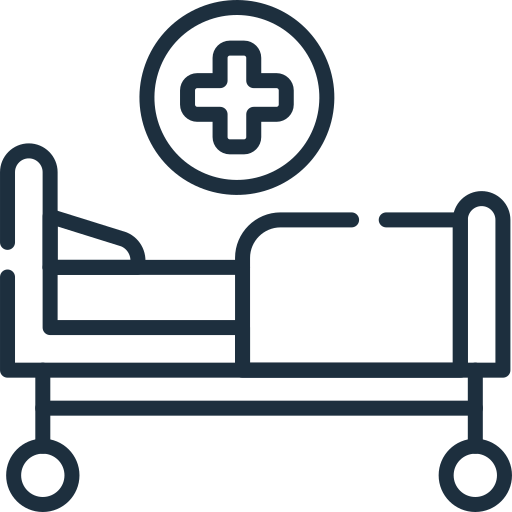Parotid Gland Surgery
Dr. Jérôme Paris is a highly skilled specialist in parotid gland surgery treatment in Dubai, providing comprehensive solutions for conditions affecting the salivary glands. With extensive expertise in both benign and malignant salivary gland disorders, Dr. Jerome offers advanced surgical techniques to treat conditions such as tumors, chronic infections, and obstructions, ensuring patients receive the best care tailored to their specific needs. His approach prioritizes precision, safety, and preserving vital facial structures, including the facial nerve, to achieve optimal outcomes with minimal complications. Dr Jerome Paris is director of french Institute of parotid surgery in Marseilles (www.parotide.com)
Parotid and Salivary
Gland Surgery
Restore Comfort, Regain Confidence
Parotid and Salivary Gland Surgery
Why Parotid Gland Surgery Is Important
The parotid glands, located on each side of the face near the ears, are the largest salivary glands and play a crucial role in producing saliva for digestion and oral health. Conditions affecting these glands, such as tumors, infections, or blockages, can cause significant discomfort, facial swelling, dry mouth, and even complications like difficulty eating or speaking. Parotid gland surgery is often necessary to remove tumors (benign or malignant).
Types of Parotid Gland Surgery Performed by Dr. Jerome in Dubai
Superficial Parotidectomy + -
This is the most common type of parotid gland surgery, typically performed to remove benign tumors located in the superficial (outer) part of the gland.
Procedure: Dr. Jérôme carefully removes the affected part of the gland, ensuring the preservation of the facial nerve. Using advanced imaging and surgical tools, he minimizes tissue disruption, resulting in less visible scarring and a quicker recovery.
Total Parotidectomy + -
For larger tumors, malignant growths, or conditions affecting the entire gland, a total parotidectomy may be necessary. This involves the removal of both the superficial and deep parts of the parotid gland.
Procedure: Dr. Jerome’s expertise in head and neck surgery allows him to perform total parotidectomies with a focus on preserving facial nerve function. He uses meticulous dissection techniques to avoid nerve damage, ensuring patients maintain facial movement and expression. He minimizes tissue disruption with minimal invasive approach, using non visible scarring : cosmetic facelift incision.
Facial Nerve-Sparing Parotid Surgery + -
Preserving the facial nerve is a critical concern during parotid gland surgery, as the nerve controls facial expressions. Facial nerve damage can lead to complications such as drooping or paralysis on one side of the face.
Procedure: Dr. Jerome employs nerve-monitoring technology during surgery to precisely map the nerve pathways, allowing him to avoid damaging these structures while effectively removing the tumor or diseased tissue. This approach significantly reduces the risk of postoperative nerve complications.
Minimally Invasive Parotid Surgery + -
For smaller tumors, minimally invasive techniques may be used, which involve smaller incisions and less tissue disruption.
Procedure: This approach reduces scarring, decreases recovery time, and allows for an outpatient setting in some cases. Minimal invasive technique enable Dr. Jerome to remove growths with minimal invasiveness, ensuring a faster return to normal activities for patients. Scar is invisible and postoperative facial nerve is normal.

Common Conditions
Common Conditions Requiring Parotid Gland Surgery
Benign Tumors (e.g., Pleomorphic Adenoma, Warthin’s Tumor) + -
Most parotid gland tumors are benign, but they may still cause discomfort, swelling, and aesthetic concerns.
Treatment: Superficial parotidectomy is usually recommended to remove these tumors, with a focus on preserving the surrounding tissue and nerves.
Malignant Tumors (e.g., Mucoepidermoid Carcinoma, Adenocarcinoma, Adenoid Cystic Carcinoma) + -
Malignant tumors of the parotid gland can spread to nearby structures, requiring more extensive treatment.
Treatment: Total parotidectomy surgery may be needed with neck dissection often combined with reconstructive techniques and possibly adjunctive therapies like radiotherapy.
Parotid Gland Surgery
Techniques Used by Dr. Jerome for Parotid Gland Surgery in Dubai
Facial Nerve Monitoring
During surgery, Dr. Jerome uses advanced nerve-monitoring technology to track the function of the facial nerve in real time. This ensures precision and minimizes the risk of nerve damage.
Microsurgical Techniques
For complex cases, microsurgery allows for meticulous dissection of tumors and surrounding tissues, preserving the integrity of nearby nerves and vessels.
What to Expect
What to Expect During Parotid Gland Surgery
Parotid gland surgeries are generally performed under general anesthesia. The duration of parotid gland treatment varies based on the complexity and size of the tumor or condition being treated. Dr. Jerome provides a thorough pre-surgical consultation to discuss the patient’s concerns, explain the surgical plan, and outline expected outcomes. His approach prioritizes minimal invasiveness whenever possible, reducing the risk of complications and promoting quicker recovery.

Recovery and Long-term Care

Healing
Common post-operative symptoms include swelling, bruising, and mild discomfort, which typically subside within a week or two. Patients are advised to follow detailed aftercare instructions provided after parotid gland treatment by Dr. Jérôme to ensure smooth healing.

Hospital Stay
Depending on the complexity of the surgery, patients may need to stay in the hospital for 1-2 days. Minimally invasive surgeries might allow same-day discharge.

Follow-up Care
Regular follow-up visits are scheduled to monitor healing in Dubai.

Parotid and Salivary Gland Surgery
Benefits of Parotid Gland Surgery with Dr. Jérôme Paris in Dubai
Comprehensive Care + -
From initial diagnosis to post-operative follow-up, patients receive personalized care tailored to their needs.
Facial Nerve Preservation + -
Advanced nerve-monitoring techniques help minimize the risk of nerve damage, ensuring patients retain full facial function.
Minimally Invasive Options + -
Whenever possible, Dr. Jérôme uses less invasive methods to promote quicker recovery and reduce scarring.
Reconstructive Expertise + -
Dr. Jérôme’s expertise in facial reconstruction ensures that patients receive both functional and aesthetic benefits from their surgery.
Patient-Centric Approach + -
A thorough understanding of each patient’s concerns and goals ensures that treatment plans are designed to provide the best possible outcomes.
Parotid Gland Surgery
Conditions Treated by Dr. Jérôme Paris for Salivary Gland Surgery
Benign Tumors + -
Benign tumors such as pleomorphic adenomas or Warthin’s tumors are common in the parotid and submandibular glands. While non-cancerous, they can grow and cause discomfort or aesthetic concerns.
Treatment Approach: Dr. Jérôme performs superficial or total parotidectomy and submandibular gland removal, carefully preserving surrounding structures such as the facial nerve.
Malignant Tumors + -
Salivary gland cancers, including among others mucoepidermoid carcinoma and adenoid cystic carcinoma, require prompt and precise treatment to prevent spread.
Treatment Approach: Oncological surgery involves complete removal of the affected gland, along with lymph node dissection if necessary. Dr. Jérôme’s advanced techniques ensure optimal removal while minimizing functional and aesthetic impacts.
Salivary Gland Stones (Sialolithiasis) + -
Salivary stones can block the flow of saliva, leading to painful swelling and recurrent infections.
Treatment Approach: Using sialendoscopy, a minimally invasive technique, Dr. Jérôme removes stones without the need for large incisions. In severe cases, surgical excision of the affected gland may be required.
Case Study
Successful Superficial Parotidectomy for Benign Tumor

Patient Testimonial
I had been dealing with painful salivary gland stones for years, but Dr. Jérôme’s approach changed everything. The procedure was quick and painless, and I’m now completely free of symptoms. I’m grateful for the excellent care I received.
– Sabrina M., Shaikh
Patient Overview
A 40-year-old female presented with a painless, slow-growing lump near her ear, diagnosed as a pleomorphic adenoma.
Diagnosis and Treatment Plan + -
After a detailed examination and imaging, Dr. Jérôme recommended a superficial parotidectomy to remove the benign tumor while preserving the facial nerve.
Surgery + -
The surgery was performed under general anesthesia using nerve-monitoring technology to ensure safe removal. Dr. Jérôme successfully removed the tumor without affecting facial movement.
Postoperative Care and Recovery + -
The patient experienced mild swelling and discomfort, which resolved within two weeks. She returned to her daily activities with no complications. post operative after two months . no visible scar
Results + -
- No Recurrence: The benign tumor was entirely removed, with no signs of recurrence during follow-up visits.
- Preserved Function: The patient retained full facial function, with no visible scarring due to the minimally invasive approach.
- Patient Satisfaction: The patient was highly satisfied with the outcome, praising Dr. Jérôme’s professionalism and care.
FAQS
Parotid and Salivary Gland Surgery
Is parotid gland surgery painful?
Postoperative discomfort is generally mild and managed with medication. Most patients report manageable pain, with symptoms subsiding within a few days.
Will I have visible scars after surgery?
Dr. Jérôme utilizes techniques that minimize scarring, often placing incisions along natural skin folds or behind the ear, like minimal invasive facelift incision, due to his expertise in facial plastic surgery.
How long does recovery take after parotid gland surgery?
Most patients recover within 1-2 weeks, although full healing may take longer depending on the extent of the surgery. Patients can usually resume normal activities after a few days.
What is sialendoscopy, and how does it differ from traditional surgery?
Sialendoscopy is a minimally invasive procedure that uses a small endoscope to access salivary ducts and remove stones or treat obstructions. Unlike traditional surgery, it requires no large incisions, leading to quicker recovery and minimal discomfort.
Can parotid gland surgery treat tumors effectively?
Parotid gland surgery is highly effective for removing both benign and malignant tumors. Dr. Jérôme employs precise techniques to ensure complete removal while preserving healthy tissue and nerve function.
What follow-up care is needed after parotid surgery?
Follow-up appointments are essential to monitor healing and ensure the best results. Dr. Jérôme provides comprehensive care, including scar management and guidance on long-term recovery.
Can parotid gland surgery affect facial movement?
Dr. Jérôme’s advanced nerve-preserving techniques significantly reduce the risk of affecting facial nerve function. However, there may be temporary numbness or weakness, which often resolves during recovery.
Is it necessary to stay overnight in the hospital after parotid gland surgery?
For most patients, parotid gland surgery is an outpatient procedure, allowing them to return home the same day. In cases of more extensive surgery or specific medical needs, a short hospital stay may be recommended for observation.
step in the right direction
Get in Touch for Precision-Driven Care You Deserve
If you have concerns about a parotid gland condition or are considering surgery, Dr. Jérôme Paris and his dedicated team in Dubai are here to guide you through every step. Schedule a consultation to learn more about your options and begin your journey toward a healthier, balanced life.
